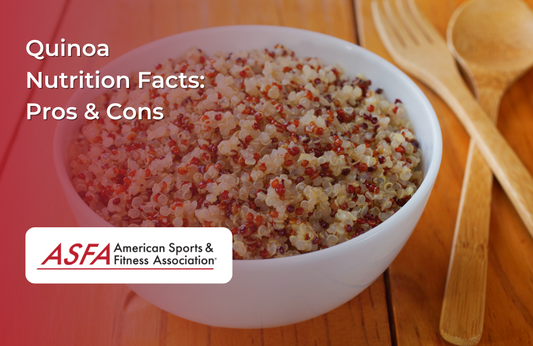Maintaining proper heart health is crucial for overall well-being, and fitness plays a key role in keeping your heart strong and healthy. The heart is a muscle, and like all the other muscles in your body, it needs regular exercise to stay fit. Health promotion through adherence to physical activity guidelines is essential for enhancing overall health and well-being. An active lifestyle helps ensure your heart remains strong, reduces the risk of cardiovascular diseases, and contributes to a longer, healthier life.
Understanding Heart Health
Heart health refers to the overall well-being of your heart and blood vessels, and it’s a cornerstone of your overall health. Maintaining good heart health is crucial for preventing heart disease, which remains a leading cause of death worldwide. Your heart health is influenced by a combination of genetic, lifestyle, and environmental factors, making it essential to adopt a holistic approach to care.
Regular physical activity and a healthy diet are fundamental to maintaining good heart health. Engaging in activities that get your heart pumping, such as aerobic exercise, can significantly reduce the risk of heart disease. A diet rich in fruits, vegetables, whole grains, and lean proteins, while low in saturated fat, sodium, and added sugars, supports heart health by managing cholesterol levels and blood pressure.
Understanding heart health empowers you to make informed decisions about your lifestyle and medical treatments. Regular health check-ups and screenings can help identify potential issues early, allowing for timely intervention. By prioritizing heart health, you not only reduce the risk of chronic diseases but also enhance your overall well-being and longevity.
The Role of Aerobic Exercise in Heart Health
Aerobic exercise, also known as cardio fitness, is the most effective type of exercise for promoting heart health. Engaging in activities like running, jogging, biking, walking, or using an elliptical trainer helps to elevate your heart rate, which strengthens the heart and improves cardiovascular function. Aerobic exercise promotes the release of endorphins that enhance mood and reduce stress, thereby improving mental health. Aerobic exercise enhances your heart’s ability to pump blood efficiently, increases oxygen delivery throughout the body, and helps lower blood pressure and cholesterol levels.
-
How Much Is Enough? You don’t need to engage in extreme workouts to boost your cardiovascular health. Aim for moderate-intensity activities that raise your heart rate but still allow you to maintain a conversation. This “conversational pace” is a good indicator that you’re working hard enough to benefit your heart without overexerting yourself. For most adults, aiming for 150 minutes of moderate aerobic activity or 75 minutes of vigorous activity per week is ideal.
-
Getting Started with Cardio: If you’re new to aerobic exercise, start slow and gradually increase the intensity. Walking is one of the easiest and most accessible forms of exercise. Begin with a 10-minute walk around your neighborhood and slowly extend your walking time or distance as you build your endurance. As you gain confidence, you can try other forms of cardio like cycling or swimming, which are gentle on the joints while providing a solid cardiovascular workout.
The Benefits of Fitness Classes and Personal Training
Fitness classes at your local health club or studio are a fantastic way to ease into a regular exercise routine, especially if you’re looking to improve your cardiovascular health. It is recommended that physical activity for overall health and disease prevention. These classes are not only effective but also provide a social and motivational environment that can keep you engaged. For beginners, group classes offer several benefits:
-
Guidance and Structure: Instructors provide clear direction on how to perform exercises correctly, helping new participants modify movements or adapt the intensity of the workout as needed. This ensures that you’re working out safely while still challenging your heart and body.
-
Variety and Fun: Group classes like dance aerobics, cycling, or dance cardio make exercise fun by incorporating music and dynamic routines. This can make cardio workouts more enjoyable and something to look forward to rather than a chore.
-
Personal Training: If you prefer a more individualized approach, working with a personal trainer can be highly beneficial. Trainers can develop a customized plan based on your fitness level, goals, and any specific health concerns. They’ll ensure that you’re performing exercises with proper form, reducing the risk of injury and maximizing the benefits for your heart.
Getting Started and Staying Motivated
Embarking on a new exercise program or making lifestyle changes can be daunting, but setting realistic goals and finding a supportive community can make all the difference. Start by choosing activities that you enjoy and that fit conveniently into your schedule. This increases the likelihood that you’ll stick with your new routine.
Setting specific, measurable, and achievable goals is key to staying motivated. For instance, aim to walk for 30 minutes a day, three times a week, and gradually increase the duration and intensity. Celebrate small victories along the way and reward yourself for reaching milestones, whether it’s with a new workout outfit or a relaxing massage.
Having a workout buddy or accountability partner can provide the support and motivation you need to stay on track. Tracking your progress through journaling or mobile apps can also help you stay engaged and see how far you’ve come. Remember, staying motivated requires a mix of personal goals, social support, and rewards. Keep your eyes on the prize—a healthier, stronger heart.
Tracking Your Progress with a Pedometer
A pedometer is a simple yet effective tool for tracking your daily movement and ensuring you stay active throughout the day. Keeping track of your steps can help you stay motivated and become more mindful of your daily activity levels. Here’s how to get the most out of your pedometer:
-
Set Small Goals: Start by setting achievable step goals, such as aiming for 5,000 steps per day, and gradually increase to 10,000 steps. Small lifestyle changes, like parking further away at the store or taking the stairs instead of the elevator, can add hundreds of extra steps each day.
-
Find Creative Ways to Add Steps: Consider making a pledge to walk your dog daily, take a walk with your children after dinner, or stroll with a friend around the neighborhood. These small changes add up and contribute to your overall cardiovascular health.
-
Use Technology to Your Advantage: Many modern fitness watches and smartphones have built-in pedometers that make tracking your steps easy. You can also opt for a simple clip-on pedometer that attaches to your shoe or waistband. The key is consistency—tracking your steps daily can keep you accountable and encourage you to reach your movement goals.
The Power of High-Intensity Interval Training (HIIT) and Vigorous Intensity Physical Activity
While aerobic exercise is essential for heart health, incorporating High-Intensity Interval Training (HIIT) into your routine can take your fitness to the next level. HIIT involves short bursts of intense exercise followed by brief recovery periods, blending both strength and cardio elements. This makes it a time-efficient way to challenge your heart and body.
-
Why HIIT Works for the Heart: HIIT workouts elevate your heart rate quickly and keep it elevated throughout the workout. This challenges your cardiovascular system, leading to increased heart strength and improved endurance over time. Additionally, the intervals encourage your body to continue burning calories even after the workout ends, known as the “afterburn effect.”
-
Burn More Calories in Less Time: For those with busy schedules, HIIT is a powerful way to maximize calorie burn without spending hours at the gym. A typical HIIT session can last 20-30 minutes and yield impressive results. You’ll get a full-body workout, improve your stamina, and strengthen your heart in a short period.
-
Try a HIIT Class: Many fitness studios and gyms offer HIIT classes designed for all fitness levels. These classes provide a high-energy environment with motivating music and a structured format that keeps you moving. Whether you’re doing jump squats, sprinting on a treadmill, or performing kettlebell swings, the variety in HIIT keeps your workouts exciting and effective.
Reducing Sedentary Behavior
Sedentary behavior, such as sitting or lying down for extended periods, can significantly increase the risk of chronic diseases, including heart disease. Reducing sedentary behavior involves making conscious choices to move more and sit less throughout the day.
Incorporate physical activity into your daily routine by taking the stairs instead of the elevator, walking or biking to work, or even standing while talking on the phone. Setting reminders or alarms to move every hour can help you stay active, especially if you have a desk job.
Find activities that can be done while sitting, such as stretching or chair yoga, to break up long periods of inactivity. Using a fitness tracker or mobile app can help you monitor your activity levels and set goals to reduce sedentary time. Making physical activity a social event, like joining a sports team or exercise group, can also keep you motivated and engaged. By making these small changes, you can significantly improve your heart health and overall well-being.
Building Heart Health and Preventing Heart Disease Through Daily Choices
Beyond structured workouts, building heart health is about making small, consistent choices that promote a more active lifestyle. Consider the following tips to integrate more movement into your daily routine:
-
Take the Stairs: Instead of taking the elevator or escalator, choose the stairs whenever possible. This small change can get your heart pumping and help strengthen your leg muscles.
-
Stretch and Move Throughout the Day: If you have a desk job, take short breaks to stand, stretch, or walk around the office. Even a few minutes of movement every hour can make a difference in your circulation and overall heart health.
-
Choose Active Social Activities: Plan social outings that involve physical activity, such as hiking, biking, or playing a sport with friends. These activities are a great way to bond with loved ones while boosting your heart health.
Lifestyle Factors that Affect Heart Health
Your lifestyle choices play a significant role in maintaining good heart health. A healthy diet, regular physical activity, and effective stress management are crucial components of a heart-healthy lifestyle.
A diet low in saturated fat, sodium, and added sugars can help reduce the risk of heart disease. Focus on consuming plenty of fruits, vegetables, whole grains, and lean proteins. Regular physical activity, including both aerobic exercise and resistance training, improves cardiorespiratory fitness and helps maintain a healthy weight.
Stress management techniques, such as meditation and deep breathing exercises, can reduce stress and anxiety, which are known to negatively impact heart health. Ensuring you get enough sleep and practicing good sleep hygiene are also vital for reducing the risk of chronic diseases, including heart disease.
Avoiding tobacco and limiting alcohol consumption are essential for maintaining heart health. Additionally, managing chronic conditions like high blood pressure and diabetes through lifestyle changes and medication can further reduce the risk of heart disease. By making these lifestyle adjustments, you can significantly enhance your heart health and overall quality of life.
Conclusion: Commit to a Healthier Heart
A healthy heart is the foundation of a healthy life, and committing to regular fitness can ensure years of vitality and well-being. Whether you’re walking, taking fitness classes, or incorporating HIIT sessions, every bit of movement counts toward building a stronger, healthier heart. Becoming more aware of your activity levels and making small, positive changes can significantly impact your cardiovascular health.
If you're a fitness professional looking to expand your knowledge, consider becoming a certified HIIT instructor. You’ll not only learn how to design effective, heart-pumping workouts but also gain the skills to help clients reach their fitness goals safely and efficiently. Click the link below to explore the opportunities and start your journey toward helping others achieve better heart health through HIIT!





